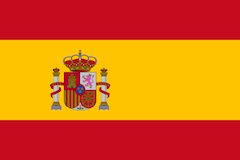The second section, Weaving the World, presents a closer look at examples of this art form in the museum’s collection. The sociopolitical and aesthetic power of such textiles in the Andes cannot be overstated. Touching every moment of an individual’s life, intricately designed and handwoven textiles were worn, exchanged as tribute, and used to wrap bodies for burial. Sadly, the pervasiveness of looting in the Andes and the lack of archaeological provenience (findspots) frequently make the determination of their original purpose impossible. Heidi King’s essay on the blue-and-yellow macaw feathered panels from the Wari culture begins with their discovery in the 1940s by huaqueros or artifact hunters, who then quickly sold them to local agents. Although their materiality and construction has been thoroughly studied and, as King discusses, the feathers indicate long-distance trade and symbolic exchange that crisscrossed the ancient Andes, the clandestine digging and sale of these incredible featherwork pieces has limited definitive interpretations of their function and the complete understanding of their abstract design.
Another authority on Andean textiles, Susan E. Bergh, contributes an essay discussing one of the most significant extant works of the Chimú (also Chimor), a Late Intermediate Period civilization centered in the ancient city of Chan Chan, near present-day Trujillo, Peru. The Menil’s large, two-panel fragment was once part of a monumental 13th-century painted textile composed of at least 10 known fragments and, possibly, several others now missing. The ten known fragments, three of which consist of two panels, have never been reunited, but the complete textile has been estimated to measure at least 75 feet (22.9 meters). Commonly referred to as the Chimú Prisoner Textile, it pictures a procession of captives with ropes around their necks, surrounded and attacked by zoomorphic beings in alternating painted colors. The ominous scene evokes the history of warfare among factious early Andean civilizations, but the imagery and size emphasize the supreme importance of textiles. Bergh’s study and contextual history of the Chimú textile is complemented by Menil conservator Kari Dodson’s essay on the Menil’s panels. Applying technical imaging and instrumental analysis, Dodson’s preliminary study of pigments and their application adds new information to existing studies of other fragments in other museum collections and advances efforts to understand how these now-separated fragments originally composed one monumental textile.
The final section, Movement and Meaning, explores the enduring transformations in the visual arts and culture of the Andes following the arrival of the Spanish in the 16th century. Essays by the University of Houston Fellow Ana Girard provide closer looks at the Menil’s group of colonial-era keros (also q’eros), ceremonial vessels typically associated with drinking chicha, or maize beer, and a religious icon painting that depicts the Virgin of Bethlehem (Virgen de Belén). As Girard details, these baroque works epitomize the complex layering of local and colonial visual histories in the Andes. Similarly predating the arrival of the Spanish in the 16th century are Andean dances and music that persist to this day and embody a long history of diverse cultural practices mixing with new visual and religious traditions imposed from outside. Here, Zoila Mendoza’s extensive experience and study of festivals in Peru are especially welcome. Her essay on the related music, dance, and organizations demonstrates how different traditions are strategically engaged. Finally, Amy Groleau examines the examples of heavily-embroidered short capes (esclavinas) from the Huancayo region of Peru, in the collections of the Menil and Museum of International Folk Art, Santa Fe. Worn during festivals celebrating a Virgin of Cocharcas and dance processions recognizing the abolition of slavery, their ornate imagery and symbolism intentionally conflate different periods in the history of Peru and its national figures.



